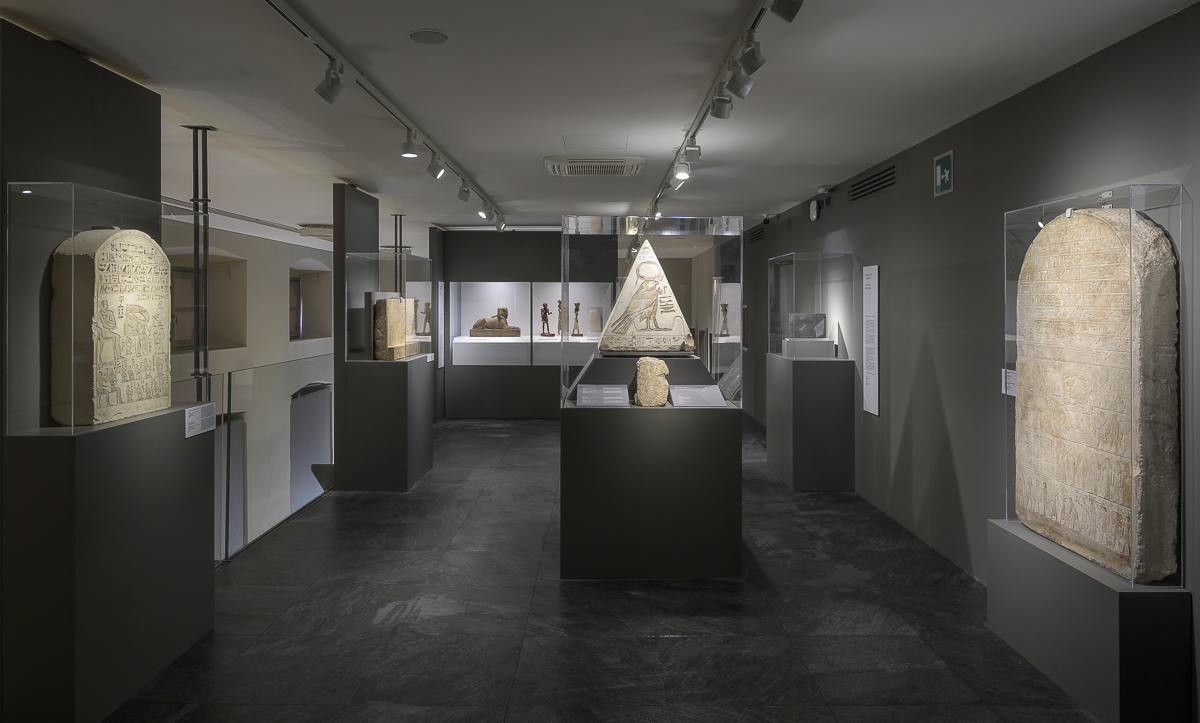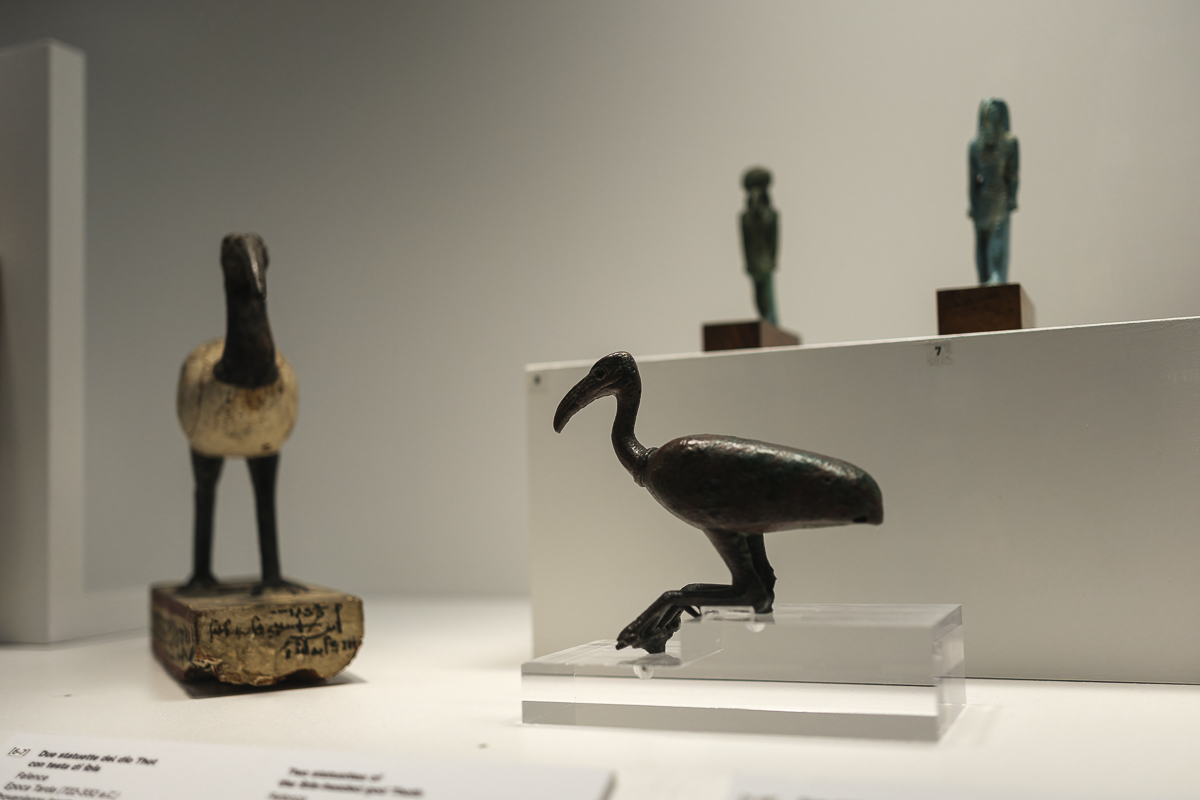Latest news
The Writing Gallery opens
info@museitorino.it
011 44 06 903
From Monday to Saturday from 9:00 a.m. to 6:30 p.m.
After consolidation and restoration works, the third floor of the Museum reopens, expanding the visitor route with a new permanent display: the Writing Gallery. An area covering one thousand square metres housing 248 artefacts provides a journey in 10 sections about the origin of ancient Egyptian writing, going back 4000 years.
Not only will hieroglyphs, along with the adventure that over the centuries led to their decipherment and the birth of Egyptology be the focus of the exhibition but also hieratic, Demotic and Coptic. Telling the story of ancient writing in its various forms and how it evolved, also means describing society, how the state functioned, as well as the role of the scribe, who was the keeper of memories of the ancient Egyptian civilisation and a holder of knowledge
The exhibition was curated by Paolo Marini, Federico Poole and Susanne Töepfer. Curator Susanne Töepfer is responsible for the Museo Egizio papyrus archive (the Papiroteca).

From its beginnings, Egyptian writing had a strong figurative element. Hieroglyphs, bridging function and art, and its cursive writing forms have survived on papyri, ceramic vase labels, temple walls, tombs, and statues, acquiring monumental and celebratory meaning. This is the case with the limestone double-cartouche, dated between 1353 and 1336 BCE, which greets us at the entrance of the Writing Gallery. Carved on a large block, the hieroglyphs take on an almost sacred significance and the name of the deity, the Aten, inscribed in one of the cartouches, spans thousands of years, coming down to us still intact today.
One of the earliest known complete sentences is also on display, present on the fragment of a monument belonging to Pharaoh Djoser, dated between 2592 and 2566 BCE and which was discovered in Heliopolis in the last century.
Among the world-renowned papyri housed in the Writing Gallery is the Turin King, the only surviving royal list dated to the Pharaonic period handwritten on papyrus, and the Harem Conspiracy Papyrus, an almost judicial chronicle, which reconstructs the trial and punishment of those who made an assassination attempt on Pharaoh Ramesses III (1190-1077 BCE); this document is now once again on display at the Museum.
Also visible to the public is a copy of the Treaty of Qadesh, a clay tablet documenting the peace established in the 13th century BCE between Egypt and the Hittite empire (in present-day Turkey), written in cuneiform. The original tablet dates to 1259 BCE and is housed in the Museum of the Ancient Orient in Istanbul. It is the oldest known peace treaty, and the copy was donated to the Museo Egizio by the Ministry of Culture and Tourism of the Republic of Türkiye.
Multimedia stations, some of which are interactive, further enrich the exhibition, created thanks to the support of the Consulta per la Valorizzazione dei Beni Artistici e Culturali di Torino.
The Gallery ends with a section about the power of writing, with magical and protective formulas against crocodiles and snake bites. We return to the mythological dimension of writing, which came to humans as a divine gift. A theme explored in depth in a display case dedicated to the god Thoth, who, according to myth, invented and gifted humans with writing, thus becoming the patron of knowledge and of the scribes.

Not only will hieroglyphs, along with the adventure that over the centuries led to their decipherment and the birth of Egyptology be the focus of the exhibition but also hieratic, Demotic and Coptic. Telling the story of ancient writing in its various forms and how it evolved, also means describing society, how the state functioned, as well as the role of the scribe, who was the keeper of memories of the ancient Egyptian civilisation and a holder of knowledge
The exhibition was curated by Paolo Marini, Federico Poole and Susanne Töepfer. Curator Susanne Töepfer is responsible for the Museo Egizio papyrus archive (the Papiroteca).

From its beginnings, Egyptian writing had a strong figurative element. Hieroglyphs, bridging function and art, and its cursive writing forms have survived on papyri, ceramic vase labels, temple walls, tombs, and statues, acquiring monumental and celebratory meaning. This is the case with the limestone double-cartouche, dated between 1353 and 1336 BCE, which greets us at the entrance of the Writing Gallery. Carved on a large block, the hieroglyphs take on an almost sacred significance and the name of the deity, the Aten, inscribed in one of the cartouches, spans thousands of years, coming down to us still intact today.
One of the earliest known complete sentences is also on display, present on the fragment of a monument belonging to Pharaoh Djoser, dated between 2592 and 2566 BCE and which was discovered in Heliopolis in the last century.
Among the world-renowned papyri housed in the Writing Gallery is the Turin King, the only surviving royal list dated to the Pharaonic period handwritten on papyrus, and the Harem Conspiracy Papyrus, an almost judicial chronicle, which reconstructs the trial and punishment of those who made an assassination attempt on Pharaoh Ramesses III (1190-1077 BCE); this document is now once again on display at the Museum.
Also visible to the public is a copy of the Treaty of Qadesh, a clay tablet documenting the peace established in the 13th century BCE between Egypt and the Hittite empire (in present-day Turkey), written in cuneiform. The original tablet dates to 1259 BCE and is housed in the Museum of the Ancient Orient in Istanbul. It is the oldest known peace treaty, and the copy was donated to the Museo Egizio by the Ministry of Culture and Tourism of the Republic of Türkiye.
Multimedia stations, some of which are interactive, further enrich the exhibition, created thanks to the support of the Consulta per la Valorizzazione dei Beni Artistici e Culturali di Torino.
The Gallery ends with a section about the power of writing, with magical and protective formulas against crocodiles and snake bites. We return to the mythological dimension of writing, which came to humans as a divine gift. A theme explored in depth in a display case dedicated to the god Thoth, who, according to myth, invented and gifted humans with writing, thus becoming the patron of knowledge and of the scribes.

info@museitorino.it
011 44 06 903
From Monday to Saturday from 9:00 a.m. to 6:30 p.m.